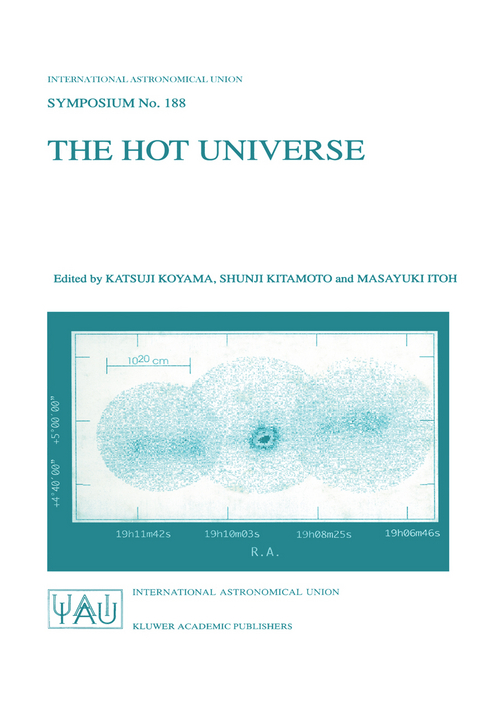
The Hot Universe
Springer (Verlag)
978-0-7923-5058-3 (ISBN)
Preface. Session 1: Plasma and Fresh Nucleosynthesis Phenomena. 1.1. Sun and Stars. 1.2. Supernovae, Supernova Remnants and Galactic Hot Plasma. 1.3. Galaxies and Their Clusters. Session 2: Future Space Programs. Session 3: Diagnostics of High Gravity Objects with X- and Gamma Rays. 3.1. White Dwarfs and Neutron Stars. 3.2. Black Hole Binaries. 3.3. AGNs. 3.4. Gamma-Ray Bursts. Session 4: Large Scale Hot Plasmas and Their Relation with Dark Matter. Contributed Papers. Session 1: Plasma and Fresh Nucleosynthesis Phenomena. 1.1. Sun and Stars. 1.2. Supernovae, Supernova Remnants and Galactic Hot Plasma. 1.3. Galaxies and Their Clusters. Session 2: Future Space Programs. Session 3: Diagnostics of High Gravity Objects with X- and Gamma Rays. 3.1. White Dwarfs and Neutron Stars. 3.2. Black Hole Binaries. 3.3. AGNs. 3.4. Gamma-Ray Bursts. Session 4: Large Scale Hot Plasmas and Their Relation with Dark Matter.
| Erscheint lt. Verlag | 31.7.1998 |
|---|---|
| Reihe/Serie | International Astronomical Union Symposia ; 188 |
| Zusatzinfo | XV, 474 p. |
| Verlagsort | Dordrecht |
| Sprache | englisch |
| Maße | 155 x 235 mm |
| Themenwelt | Naturwissenschaften ► Physik / Astronomie ► Astronomie / Astrophysik |
| Naturwissenschaften ► Physik / Astronomie ► Mechanik | |
| ISBN-10 | 0-7923-5058-8 / 0792350588 |
| ISBN-13 | 978-0-7923-5058-3 / 9780792350583 |
| Zustand | Neuware |
| Haben Sie eine Frage zum Produkt? |
aus dem Bereich


